Mary Fleming's Blog, page 11
October 26, 2019
A Novel Look at Paris, II
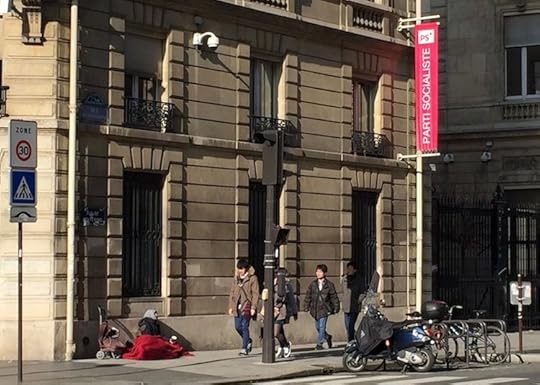
Friday, 25 October
The long, unusual walk I took two weeks ago in anticipation of The Art of Regret's publication* got me thinking about shorter, more pedestrian walks, ones made so frequently you can almost stop noticing all that is going on around you. To paraphrase the poet William Blake, all you need is a grain of sand to see the world.
Every day, and since the arrival of dog Tasha more than once in the course of that day, I walk from our Left Bank apartment down the rue de Solférino and over the bridge to the Right Bank and the Tuileries Gardens. According to my telephone it is a seven-minute, not quite 500-metre walk. But it’s all right there: a rich sampling of the city’s history, signs of its transformation and a fair display of la comédie humaine.
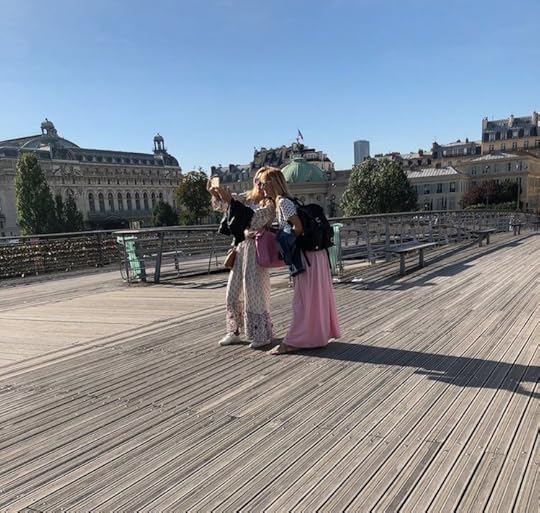
The rue de Solférino was created in 1866 under the Second Empire, following Napoleon III’s victory over the Austrians in the Lombardy campaign several years prior.
I turn the corner onto the street at number 10 and that building alone captures many of the vicissitudes of French history for the last 150 years. Un hôtel particulier, it was built by Albert de Broglie, a monarchist statesman and member of a well-known aristocratic family. In a 1934 about-face, a branch of the communist CGT union bought the property, only to see it occupied during the war by the Office of Information, the propaganda arm of the Vichy government. Shortly before the Libération the infamous Minister Philippe Henriot, his screaming wife cowering in the corner, was assassinated in their bedroom there by the Résistance. The building was returned to the CGT until 1981 when, following the victory of François Mitterrand in the presidential election, it was bought by the Socialist Party, the owner I have associated it with for almost all of my Paris life. But the Socialists' lamentable score in the 2017 presidential elections forced them to sell. It was bought by - whom else these days - developers, a group called Apsys, builders and managers of shopping malls in Poland and France. When this réalisation iconique is finished, it will serve as the company headquarters.
 We're all iconic these days
We're all iconic these daysNot to be outdone by the communist Résistance, Charles de Gaulle set up his headquarters after the war across the street, at number 5; today it is a foundation bearing his name. At the top of the street, at the two corners along the Seine, numbers 1 and 2 respectively house in other hôtels particuliers the Légion d’Honneur and the former European headquarters of the drinks company Pernod-Ricard. The latter was sold to - whom else if not a developer - a Russian oligarch in 2012. It’s been under renovation ever since.
 Spared renovation: boot cleaner at number 2 rue de Solférino
Spared renovation: boot cleaner at number 2 rue de SolférinoAnd scattered in between these grand edifices are boutiques redolent of an older Paris, one clinging to survival, if the number of customers I see patronizing the shops is any indication.
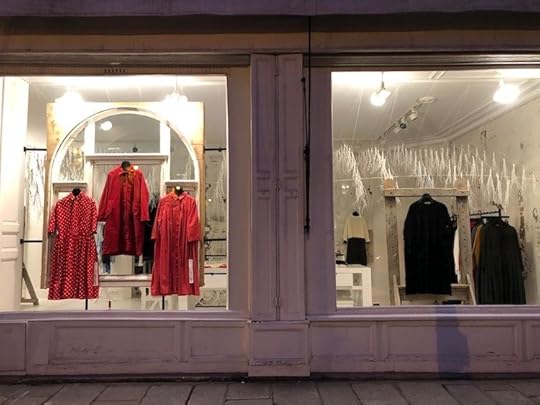
When we cross the quai Anatole France (French homme de lettres), Tasha and I must first walk around a very large, clumsily placed statue of Thomas Jefferson that appeared one day, seemingly out of the blue, about 10 years ago.

Perhaps its awkward location has something to do with the French attitude towards old Tom. He may have been the first US ambassador and the man who asserted: “Every cultured man has two countries: his own and France.” But he also managed to acquire the Louisiana Territory from them for a song, when Napoleon needed ready cash to fund his wars . For me the statue serves as a constant reminder of the long history between the two countries, most recently exemplified in President Macron’s fawning attentions to President Trump and President Trump’s parade-envy over France's 14 juillet display of military might.
Once on the passerelle Léopold Sédar Senghor, until 2006 known (and still called by old people like me) the pont de Solférino, there is the most magnificent view of the city, up and down the river Seine. I never tire of photographing it, however trite the light...

and I am not alone.

As you can see in the above photo, the pedestrian bridge continues to be the scene of love-lock mania, as well as the city's pathetic attempts to control it.

From the bridge Tasha and I often pause to observe another contemporary obsession...
 Muscle Mania
Muscle Mania...weather permitting...
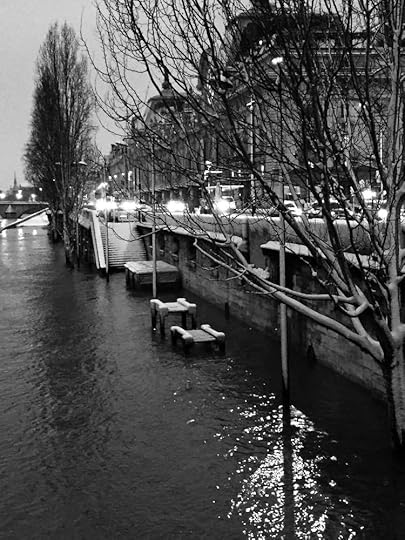
...or just the vicissitudes of nature...
 After the deluge
After the delugeDespite its location in the heart of bourgeois and tourist Paris, the bridge is also a stage for the social phenomena of the day. The scooters that almost kill you, the throngs of tourists that beg questions about both our carbon footprint and our ballooning numbers on the planet in general. Then there are the bands of young Roma who prey on tourists here and in the Tuileries, challenging one's liberal principles of openness to the world. Or the Sri Lankans who illegally sell love locks and freshly roasted chestnuts.
 Equipment stored in this manhole overnight
Equipment stored in this manhole overnightUntil yesterday, I rather admired the latter's ingenuity, enjoyed the aroma of chestnuts on an open fire, even if I wished they'd stop selling plastic bottles of water too. But then I saw a vendor clutching branches he'd ripped untimely from the trees in the Tuileries to start his fire and was outraged by this flagrant act of urban deforestation.
Still, I find it heartening that so much can be seen and experienced in such a short distance, so close to home. That all you need to start another novel is right around the corner. It makes me look forward to next year and getting back to work.
 The unknown of a new day
The unknown of a new day*The Art of Regret did indeed appear last Tuesday 22 October and thanks to all of you who have given it such a warm welcome. For more information, including press and events, please click here for my website.
October 12, 2019
A Novel Look at Paris

Wig shop, rue des Poissionniers
Friday, 11 October
The other day I took an unusual and instructive walk. It's actually a walk I have been thinking about taking since I revisited the Basilique de Saint Denis in 2015 because it relates to a novel that I was then revising and that will now be published in 10 days, on the 22 October.
For a writer of fiction, Paris geography is a gold mine. Streets with sonorous names and long, deep histories provide context and symbolism and atmosphere. Once I plunge into my two-volume Dictionnaire historique des rues de Paris, it can be difficult to climb back out.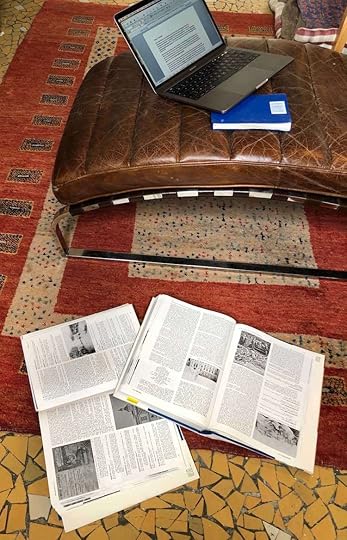
In The Art of Regret the protagonist and narrator Trevor McFarquhar lives and works on the rue des Martyrs, "a narrow market street," as he describes it, "which begins its climb at the northern edge of the banking and insurance district and ends in the skein of streets that wraps around the Sacré Coeur” church in Montmartre. The novel mirrors the street's geography: Trevor was born and raised in a bourgeois world but due to a past burdened by unresolved personal tragedies, he contrarily rejects all that his family represents. He is on an uphill climb to the martyrdom of failure, until events occur to set him on the road to redemption; in the end he finds his heart.
The story behind the rue des Martyrs is what led me on the walk. Originally a Greco-Roman thoroughfare, it got its name from a 3rd century legend based on the scantest of facts and an abundance of imagination. Denis, perhaps a disciple of Paul, had been sent to Paris by Rome to convert the infidels of Lutetia, as Paris was then known, to Christianity. He was doing a pretty good job and the pagan authorities, feeling threatened, decided that Denis, along with his two pals, Rustique and Eleuthère, should be executed. They were led north along what would have been the beginning of the rue des Martyrs and beheaded near its end, halfway up the hill of Montmartre, at the time probably a holy place for the Druids.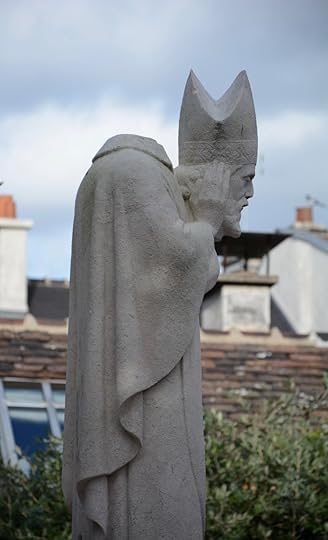
According to the story, the three mates picked up and washed off their noggins. Heads in hand, they then continued walking and preaching for several kilometres, until they encountered a pious widow, at which point they dropped dead at her feet. Catulla buried them on the spot. A couple hundred years later Saint Genevieve, named patron saint of Paris because she kept out the invading Huns through prayer, built an oratory there that in turn became the foundations for an abbey and the Basilique de Saint Denis, church of the kings of France, the place I visited in 2015.
Since then I’ve wanted to walk the route of St Denis and his friends, to witness their detached gaze today. I started at the bottom of the rue des Martyrs, where our friends would still have been alive and intact.
What a difference, even from 1995, when the first part of the novel takes place. The street was then lined with dowdy shops, one of them, a bike shop called Mélo-Vélo, belonging to Trevor. In those days cycling was an extremely uncool activity relegated to the working class and diehard hippies. The shop, like Trevor, was failing. Now every millennial owns or rents a bike.
The rue des Martyrs
While still very much a shopping street, the area has been completely bo-bo-isé (gentrified). Storefronts glimmer with high-end products.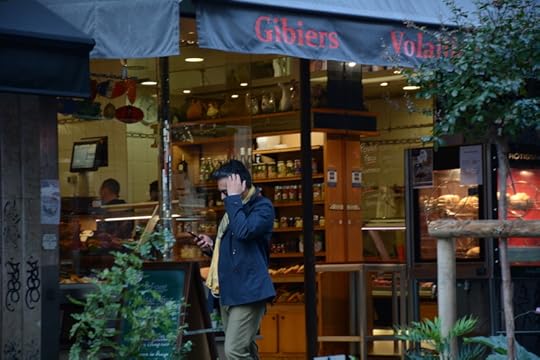
Cafés are no longer the tawdry type of Trevor’s Rendez-Vous des Martyrs, stinking of frites oil and nicotine.
North of the boulevard de Rochechouart, Montmartre has retained its Bohemian chic but from the looks of the children leaving the school under which the crypt marking the spot of Denis' execution lies, it has also become a very multicultural place.
From there I decided to follow the route Denis et Cie would likely have taken: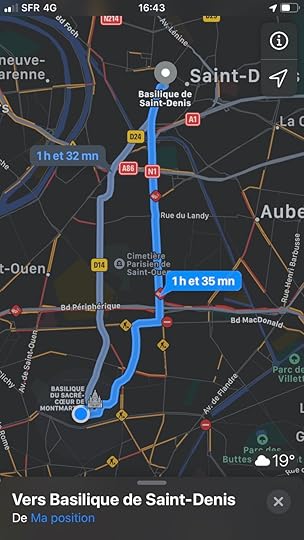
I surmised this not because Google Maps told me so but because like the rue des Martyrs, the streets along the way have been around for so long. The rue des Poissonniers, for example, was the route along which fish arrived from the North Sea for hundreds of years. Today it's still a bustling market street, though it caters to a broader population.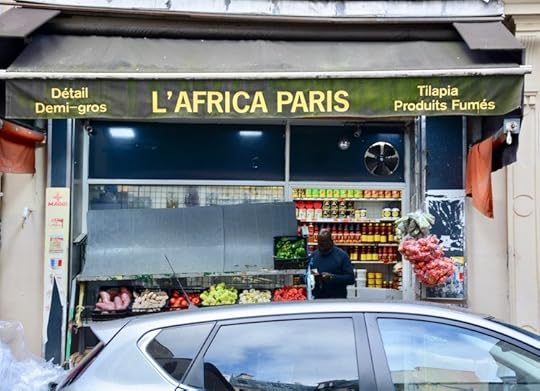
Near its end, however, all charm evaporates. Swathes of land were cleared, first for the railroads, now for office space and apartment blocks.
Diane Arbus and twin towers
At the porte de la Chapelle a dizzying junction of roads leads to the avenue du Président Wilson that now runs alongside the A1 autoroute, originally also a Roman road. It's surely the route Denis would have followed, though I'm not sure which of us would have felt more stupefied, Denis in his headless state or me, overwhelmed by the noxious exhaust and the incessant din of traffic - even once I was on La Plaine, where the autoroute runs underground.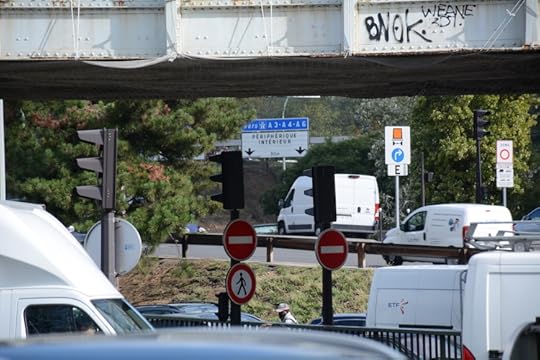
Today this Parisian suburb is a hodgepodge of architecture, from dilapidated late 19th-early 20th century buildings...
...to massive modern complexes, such as the SNCF railway ‘campus’ or the electricity company Engie’s mind-numbing spread. There's new age office space, too, with young, hip people buzzing in and out...and tents for homeless migrants.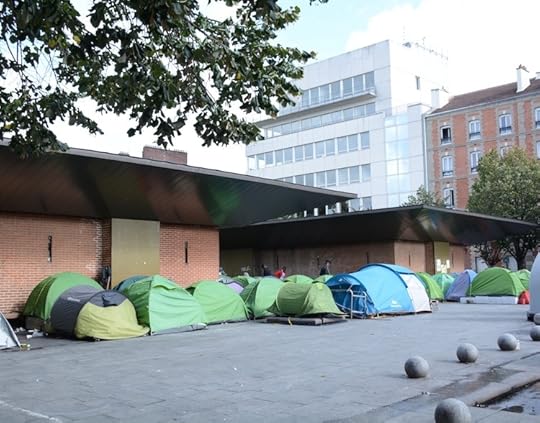
Along the way there are the many faces that make up France today...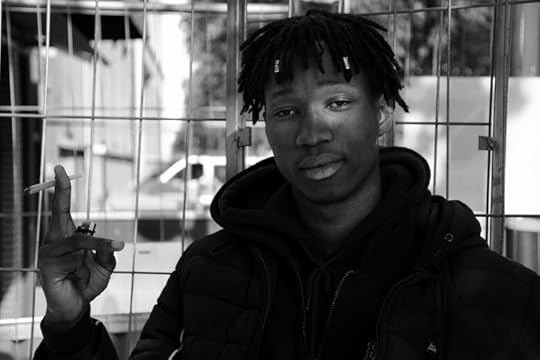

...right up to the Basilique itself, where all these centuries after Denis dropped dead here, schoolchildren were happily experiencing this chapter of French history.
The walk gave me quite a perspective on how Paris is developing beyond its fairy-tale centre. It was almost enough to make me lose my head.
September 28, 2019
The Spice of Life
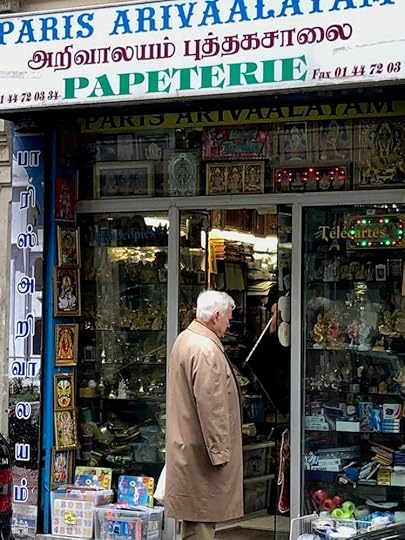
Friday, 27 September
How odd that a trip to the Indian quarter of Paris should make me feel I am really home, that our Berlin life is really over.
La Chapelle, as the quartier indien is known, stretches from the Gares du Nord and de l’Est up to the métro stop La Chapelle and is actually Sri Lankan. Or more precisely, Tamil. Fleeing civil war with the majority Sinhalese, the minority Tamils began coming to France in the early 1980s. Though their colonial past made Britain a more natural destination, immigration laws there were too restrictive and they never got across the Channel. The vast majority settled in this northern area of Paris, not far from the Sacré Coeur church, where they at first went to worship because it reminded them of home.
My own history with the area began as an act of rebellion.
When our children were young, their culinary tastes varied widely. There was Alex who was fussy about meat; there was Georgina who ate no fish. Both stepsons, Nick and Alex, loved spicy and exotic cuisines. Unlike my children who, when we went to our local Chinese restaurant Lao-Tse, ordered the same thing every time: breaded chicken, with the lemon sauce—which they never touched—on the side, please. Christopher declared pepper “the enemy.” Feeding the five of them was a constant headache and I finally resorted to a fixed set of meals, repeated week after week.
By the time William, the last of our children and the most finicky of all (pasta with butter and Gruyère cheese, basta), was entering his teens, I had had enough. Even the food I was cooking for adults had begun to seem routine and insipid. Then our friends Tala and Stéphane took us to dinner at La Chapelle and my tastebuds were electrified. Indian cuisine seemed the perfect antidote to my ennui. And who knows. Maybe also a presentiment of the day Georgina would meet her Indian husband Amal.
Where it all began
Armed with Anjum Anand's Indian Every Day that I had bought at W.H. Smiths, I jostled my way through the narrow, crowded aisles of the Cash & Carry's to load up on seeds, spices and pulses...
...on the onions, garlic and ginger that seemed to be required in every recipe...
...often in industrial quantities...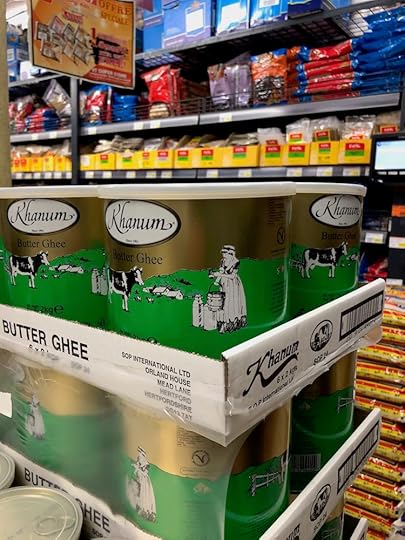
Thus began a period when it was indeed Indian Every Day and it all had to be made from scratch: I ground my own spices with a mortar and pestle, grated my own ginger and garlic pastes and cooked my own bread. It was extremely time-consuming and almost led to divorce. ("What are you making now?" David would ask edgily when he entered the kitchen. Then plaintively: "How long will it take?"). Eventually I calmed down and returned to some more laid-back, Mediterranean preparations but that frenzied period still influences much of what I cook, with some spices and chili pepper livening things up here, a little yoghurt sauce rounding things out there.
Before we moved half-time to Berlin, I would sneak up to La Chapelle every chance I got to replenish supplies and eat lunch at one of the many excellent and very cheap restaurants. But I also went to experience the neighbourhood. With its smells and bustle, it was the diametric opposite of my monochrome, hyper-bourgeois 7th arrondissement and a happy reminder that Paris is more than its staid centre. It was like going on a short, vibrant holiday.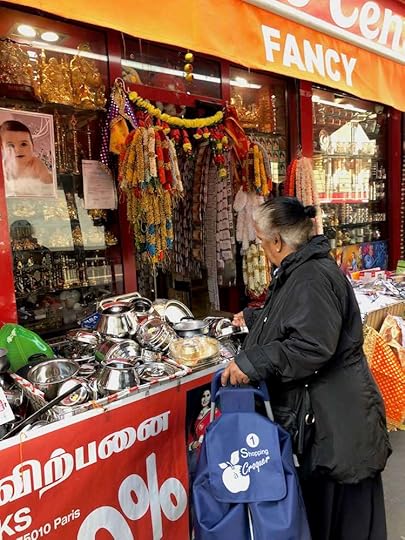
During the Berlin-Paris gig, however, I never had time for my getaway and I pretty much stopped making full-blown Indian meals. It often frustrated me. So last week, when William and I decided to meet for lunch halfway between the 7th and 19th arrondissements, I returned to La Chapelle for the first time in several years. I walked out of the métro to the smell of curry and storefronts with signs that mix Tamil, English and French...
...that sell everything from saris...
...to these bitter gourds..
...to the fruits of colonialism...
The Empire Strikes Back
All housed in classic Paris architecture.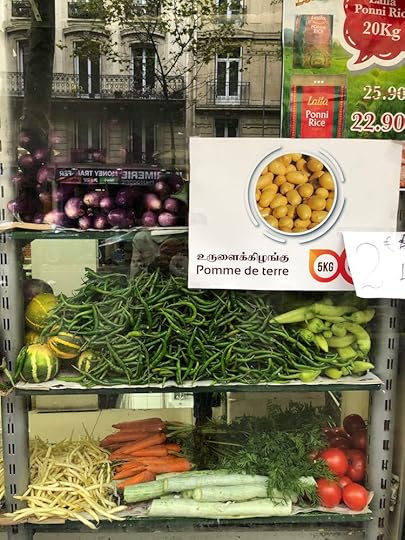
It is this melting pot of people, scripts, products and cultures that jolts me awake just as much now as it did on my first visit 15 years ago. Today I would say the intercontinental mix has only broadened.
Of course our children are long grown up, have moved on too. At lunch, the once buttered-pasta William had a lamb vindaloo, a particularly spicy type of curry. Afterwards I did some shopping at the Cash & Carry. And I'm all set to get back to some grating and grinding.
August 30, 2019
Our Nature

Friday, 30 August
Summer is winding down. At least I think it is. This past week in Paris the thermometer has climbed to a dog-day 34°C (93°F). But there are also crispy brown leaves piling up on the streets, as if we were already well into autumn.
And along the autoroute, on the way to and from our house in the Perche, are mangy patches of dead and dying trees.
Such are the effects of several bouts of extreme heat and drought. Harbingers of the Apocalypse? Maybe, maybe not, but it’s terrifying nevertheless. As I walk the city streets or the country lanes, as I sit down to write this blog, I can think of little else.
Except my mind does also keep returning to the Bible story of the Garden of Eden. Whether you’re a believer or not, it’s a didactic tale. God gives Adam and Eve a prime piece of real estate, says they can live there forever, so long as they don't touch one tree in the garden, the tree of knowledge. But some combination of curiosity, insatiability and maybe boredom drives Eve, the ur-Desperate Housewife (though I’d say that in the history of the real world Adam has shown himself to be by far the greater sinner), to disobey, to listen to that snaky Satan. She eats the apple from the forbidden tree, shares it with her husband. God, who's not the most forgiving of characters - you could even say he has an anger management problem - is furious and summarily evicts them, saying: “cursed is the ground for thy sake; in sorrow shalt thou eat of it all the days of thy life. Thorns also and thistles shall it bring forth to thee.” (Genesis, 3: 17-18)
God's predictions have not proven entirely correct. The thistle (above) is quite spectacular and we're lucky to have it. Exercising our free will and indulging our curiosity have led to many good things—like the invention of the computer on which I write and the internet through which the fruits of my labour can, with the push of a button, travel the world in a flash. Controlling our acquisitive impulses, however, is a different story. Our egocentrism keeps elbowing out our better angels, and in the case of the planet, that means we may soon have no garden from which to be ousted. "For dust thou art, and unto dust you shall return." (Genesis, 3:20)
The new April in Paris
However it may appear, the calendar confirms that this is indeed the end of summer and we are heading into la rentrée. There are other signs too. Last week the swallows in our barn, after a raucous rave party to which the entire Perch chapter of the swallow community seemed to have been invited chez nous, started departing. There's only a small family with two chicks still in residence. Yesterday Paris started filling up like a clogged drain with returning Parisiens.
A new season implies a fresh start, so rather than lingering on the burning Amazon or a hot and thirsty Europe, I will leave you with a few visual reminders of our blessed earth.






Wishing you all a fruitful autumn.
August 17, 2019
Whose House Is This?
Friday, 16 August 2019
Our new house in the Perche may be situated at the end of a track. Our nearest neighbours may be at an invisible distance. But that does not mean we are alone.
The habitable space of our property is in two parts. On the left side of the above photo you see the original seigneurie, or local noble’s dwelling, dating from the 16th century. To the right is the barn extension added in the 19th century. The two are separated only by the shared wall of the original house. Our predecessors, though they lived in the seigneurie, remodelled the upper level of the grange with the idea of renting out the space to holiday makers.
Pending renovation work and because our Berlin bed was too big for the staircase in the main house, we decided to sleep in the guest quarters ourselves. The other very large room provides ample space for David’s office and beloved pool table. That shared thick 16th century wall affords sufficient insulation for his audible and frequent phone or Skype calls. Here you see that windowed wall from two directions:
David in his office

Me in mine, at the far end of the main house
The ground floor of the barn is still a barn, with cattle troughs for eating, stalls for milking and mangers for hay. Since there is no direct access to our aerie from the house, we must enter through a barn door and climb an enclosed staircase. This door is barred but not paned, thus providing the perfect opening for a family of swallows.
Swallows are small, migrating insectivores that used to make their mud nests in caves but now flock to man-made structures such as barns, garages, stables or bridges. This capacity to adapt may be why they continue to flourish on all continents except Antarctica.
When we first arrived Frédéric and Corinne B had left the barn immaculate. You could wander at leisure and examine the residual milking equipment and mangers. Come late spring the odd swallow would whoosh its way by your head. How sweet, we said. They must be returning from their winter in southern climes. By the time we left for our final stint in Berlin, about five of them were in residence. By the time we moved back definitively in late June the flock had doubled.
Why wouldn’t it? The habitat is perfect. Perching possibilities abound. Besides the mangers and stalls, there are pipes, some covered with woolly insulation that can also be picked at and used to pad the nests. Outside it’s just the way swallows like it: open farmland with lots of bugs to eat in flight.
They are so chuffed with this life that they continue to proliferate. I’d say today we have at least thirty, with more on the way, from the looks of this roosting mother.
We are decidedly not alone. These busy, vociferous creatures dart and swoop between the bars, in and out of the barn. Inside they fly around in circles, wings whirring, all the while disputatiously scolding one another with high-pitched chirpings and trillings.
(photo from Wikepedia site)
At times, given their numbers and noise level, the place seems to belong more to the swallows than to us; the notion of knocking before entering does not seem misplaced.
And as they multiply, so does their poop. By now it is absolutely everywhere, from the floor…
This is not a Jackson Pollack
…to all surfaces, including vertical doors and their handles. Cute they may be; housetrained they are not.
This summer many family members and friends have visited us here in the Perche. We have travelled to Denmark for a 25th wedding anniversary.
Lise (right), preparing
This has meant lots and lots of talk and at least half of it has been about our poor planet. Given the drought and the 40°C+ (104°F+) temperatures we have endured, it's not surprising. We have lamented increased rainforest deforestation and inadequate, if not deleterous, government intervention. We have discussed our own weeny, individual efforts to combat climate change, all the while noting that we continue to drive cars and take planes to farflung destinations. We have admitted to feeling both powerless and hypocritical. The discourse often finishes with someone saying: of course the real problem is that there are too many of us.
Certainly most of the non-humans on the planet, including the swallows in our barn, would agree with that assessment. Dozens of species are going extinct every day, in part due to lost habitat. And indeed, come January the swallows, though not an endangered species, will lose their home when the work begins to turn the barn into our sitting room and bedroom. Though we have fretted about dispossessing the birds when they return next spring, we have not changed our renovation plans.
We'll get our way with the house but perhaps not, ultimately, with the planet.
July 27, 2019
Carl H Hintze on the Move

Friday, 26 July
Some of us humans are happier living away from our homeland. We feel more comfortable where we are less quantifiable, less easily classified. I have recently discovered that this may also be true for pianos.
If I was a bit concerned about Tasha the dog’s adjustment to our new life in the Perche, I was more worried about the acclimation of my wood and ivory companion. Built in 1907, the Carl H Hintze Flügel had probably never in its long life left Berlin.
Though I came to it late, playing the piano is an important part of my life and it’s actually surprising that I have not much mentioned it in this blog these last five years. Perhaps because my childhood associations to music, beyond listening, are tainted by disappointment and distress. I won’t bore you with the details but my parents did not put much stock in a musical education and I reached adulthood shamefully unable to locate middle C on the piano.
I was therefore determined that my own children be less ignorant. Each would learn an instrument. When the youngest William started the piano at age six, his teacher Françoise, whom I’d already known for the several years Georgina had been playing, asked if I could sit in on William’s half-hour lesson so that I might help him practise.
After a month she asked if I wouldn’t like to try a few notes myself. Within two weeks I was getting my own full hour lesson and I’ve never looked back. Françoise, by now also a dear friend, is still my teacher—including while I was in Berlin, when she gave me lessons via Skype. I’ll never be a maestro but learning a new piece or playing my repertoire gives me huge pleasure; seeing my fingers scuttle across the keyboard and emit coherent sound from the instrument still fills me with wonder.
My first lessons were on our upright Gaveau but after a few years, with several family members playing and a corner of our living room just made for it, we bought a demi-queue ('half-grand') Bösendorfer, a Vienna-born aristocrat of the piano world. The night before delivery I had a nightmare that the atelier had decided I wasn't worthy of such a majestic instrument and was putting a stop to the purchase.
But the piano did arrive. And when the three burly men who had lugged it upstairs and reassembled the pieces had left us alone, I was filled with the strangest feeling. Some of you (my husband included) may think this crazy but the Bösendorfer, unlike the Gaveau, had a personality, a soul. I could sense her presence as if she were a living thing. Which actually helped me feel more deserving: even if my playing wasn't up to her standards, at least I was providing the beautiful giant with a good home.
In Berlin, where we also had a large living room, we set out to find another grand in need. Our friend Ulrich K put us in touch with Klaviermeister Herr K, who had recently resurrected a Flügel he had found in a lamentable state at a liquidation sale in Charlottneburg.
In the early 20th century Carl H Hintze ran a big-ish business and sold pianos to royal houses across Europe (thus the Hoflieferant and the crests you see above) but success was short-lived (if you are interested in its boom and bust story and can read German, here it is). Since the address stares me in the face every time I open the keyboard, going to Bülow-Str 48-49 was a must on my list before leaving Berlin. The buildings still stand; in the long storefront of what is now a 'personal management' agency you can imagine a piano workshop.
Carl too gave off vibes but very different ones from his Paris cousin. The Bösendorfer is munificent, fluid, with a light touch and rounded tones that perfectly suit the Romantic music I favour. Carl, while emitting wonderfully deep, rich bass tones also conducive to moodiness, had a harder touch, received my fingers with a certain recalcitrance. At first in the apartment I could not make the same sounds come out of him that I had in Herr K’s workshop.
After struggling for a couple of weeks, I sat down one Sunday afternoon to practise. A while into it—during one of my Chopin Nocturnes, I remember—the notes suddenly began to flow. Again, some of you (husband included) will think I’m crazy but it was as if the piano were speaking to me, telling me he had been through some very bad times. It made tears well up in my eyes and I felt that through my playing I was letting the piano know I would care for him.
Part of the furniture
When we decided to leave Berlin, it seemed right that Carl should not be wrenched from his home city. But after a potential buyer shunned him for a Bechstein, I consulted Herr K. He said a sale might not be easy—there were already lots on the market—and we decided to take this large piece of Berlin to the Perche with us.
In the move the piano was one of the last of our belongings to go. I watched the movers take him apart...

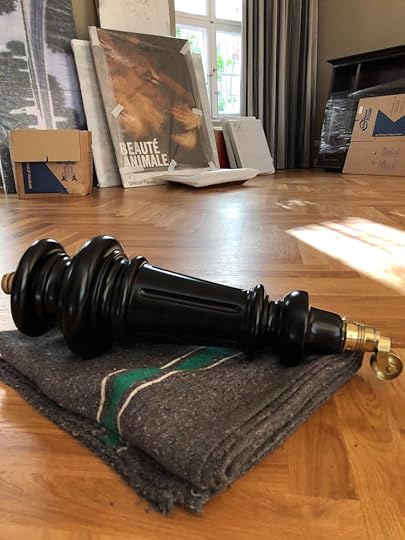
...get him into the truck...
Once again those tears welled up—it seemed so momentous, turning this noble creature into an emigré.
Upon arrival here in the Perche...

...there were those wet eyes again, prompting one of the movers to remark: ‘It really has an effect on you, doesn’t it?’
The piano looked grand in the stone walls of this 16th century seignurie percheronne but how would he sound, how would his keys react here?
To ease him in, I played the first ‘real’ piece of music I learned, Bach’s Prelude in C-major from The Well-Tempered Clavier. Baroque music requires no sustain pedal (the one on the right that makes the notes continue to resonate) but when I got to the end of my prelude, Carl H. Hintze was humming. He sounded like a purring cat. Okay, the pedal may or may not have got stuck in the reassemblage but here's irrefutable proof of Carl's state of mind here in the Perche:
In Berlin, every time I sat down to play, Tasha would get up, give me the evil eye and flee to the farthest corner of the apartment. Here in the Perche, however, with her bed right next to Carl she sleeps on when the notes start to sound. I'd say we have one happy piano.
At home, in the Perche
July 13, 2019
Tasha, a Franco-German Dog in the Perche

Getting the lay of the land
Friday, 12 July
While thinking about how to approach the first entry of this re-christened Paris-Perche Diary, I returned to the beginning, to the first blog I ever wrote in the Paris-Berlin Diary. One paragraph long, it was entitled Back to Berlin and was written exactly a year after we moved half-time to that city. The snippet mostly expressed the opinion of our dog Elsa, who became the cornerstone of the endeavour several months later with Elsa, a French Dog in Berlin.
Given the recent tectonic shift in our life created by moving full-time back to France, it seems only right that the voice of our current dog—the French rescue mongrel who is coincidentally largely composed of German short-haired pointer and has spent her life with us pinging and ponging between Paris and Berlin and has often herself inspired the blog—should be heard.
What's Tasha's take on her new Paris-Perche life?
When I committed the rash act of driving to the animal shelter near Arras to ‘look’ at the dog I had seen on the internet, the woman in the kennels who first read my application said: “You live in an apartment. This is a hunting dog. You can’t take her.” I objected, saying that I lived near gardens and the river and could take her on long walks.
Ad material for Field & Stream or Shooting Times
Her more pragmatic superior believed that his primary role was finding a happy home for the abandoned souls in his care and, recognizing a sucker when he saw one, allowed me to adopt the dog.
But the woman’s words have often echoed in my ears. Such as when I realized that the Tuileries Gardens to Tasha are like a wading pool to an Olympic swimmer. Or that a 90-minute trot along the banks of the Seine is a mere morning stretch. That along with my efforts she needed several hours in the woods twice a week with Koffi if she was going to be remotely sound of body—and mind.
Berlin, with the Treptower Park and Plänterwald at our doorstep, was better suited but still somewhat confined by roads and frequented by many fellow seekers of outdoor pleasure for Tasha to bark at. Still, having spent much time during our Berlin life with Anna, she certainly felt more Zuhause there than Elsa ever did.
The move therefore caused angst…
…and required reassurance...
...though uncertainty was quickly forgotten. Family members, visiting to inspect our new digs, have lavished her with attention and been lax with the rules.

She has been left speechless at the singular sight of David in an apron.
The main attractions, however, are space and nature. As I mentioned in my first entry about our new home, we are surrounded by field and forest, chock full of pheasant, deer, wild boar and hare. Just smelling the air, even from the car...
...sends her into raptures and, unfortunately when she's free, into long forays. We have often been thankful for the white-tipped tail.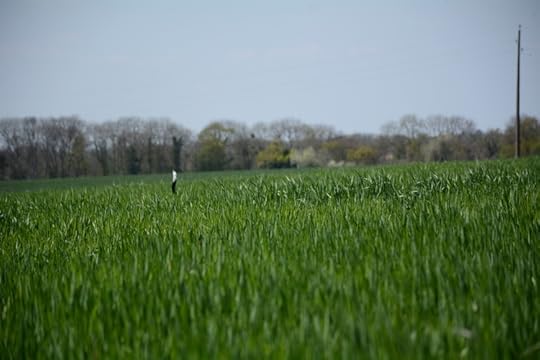
But not often enough. On our second weekend here, Tasha disappeared for five full hours. She may have been having a grand time but I was about to phone the gendarmes. Even if she has been more reasonable since (generally one to two hour missions) and even while we accept, as Koffi said, that hunting is her nature, that we cannot tie her up or always walk her on a lead, something had to be done.
So following the advice of another expert, Madame P, I last week procured a GPS system for dogs. This morning as I write it is being used for the first time. Tasha is out on a romp but at least I know where—and it's thankfully not even far from the house.
Thank you Weenect!
Over the past several months David has said on several occasions: "I know we're buying the house for that damn dog." Though not quite true, it is as if Tasha, aka la Princesse, has finally been given her kingdom. As if she has finally found home.
Son Altesse
June 22, 2019
Den 17.Juni und/et le 18 Juin

Straße des 17.Juni: "Der Rufer"(The Caller), statue commemorating the uprising; the Victory Column in the background
Friday, 21 June
Our move from Berlin back to France last week was so aptly timed, so ripe with symbolism, you'd be forgiven for thinking the dates were chosen just so I could write this blog, the final entry of A Paris-Berlin Diary.
It began on the 17 June, a date every Berliner knows because of the Straße des 17.Juni, a thoroughfare at the heart of the city's east-west axis. A continuation of the Bismark Straße to the west, it runs through the Tiergarten and past the Victory Column to the Brandenburg Gates before becoming the Unten den Linden to the east. Straight and wide enough to have been used as a landing strip when the airports had been destroyed at the end of World War II, it was given its current name after a 1953 uprising against communist rule was brutally quelled by the East German police and the Soviet army. Every West German of a certain age also knows this date because until reunification it was a national holiday, even if many thought it had something to do with the death of Jesus Christ, rather than the fight for freedom.
Having lived most of our almost six and a half years in the former East where many of the effects of that rule are still visible, it was a fitting day to leave, another reminder of the city's wrenching 20th century history that, in part, attracted us to Berlin in the first place.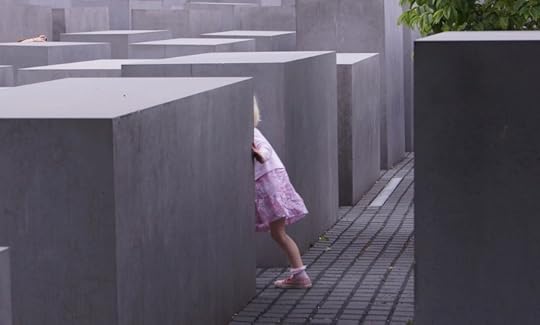
The Holocaust Memorial
Two days prior, all the items on my prep list ticked, I rode my bike over there for one last look. The swarms of tourists on the east side of the Brandenburg Gate still surprise me. My mind's image remains stuck in the early 1990s when I first visited and there were more vendors of old Soviet army paraphernalia and putative bits of the Berlin Wall than potential buyers. This Saturday there were also protestors.
The man on the left with the placards accuses both Nazis and the Saudi royal family of being Zionist; the Gelbewesten, the German take on gilets jaunes, are members of the extreme right wing Reichsbürger movement who believe the Third Reich is still the legitimate government of Germany. One man resisted my photo taking until I told him I was from France, a country he may still consider under German occupation. Believe in progress at your own risk; humanity does and doesn't move on.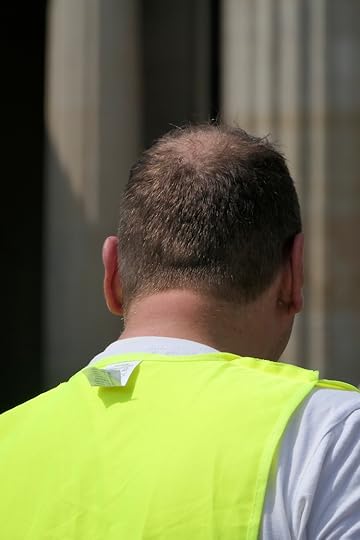
Montag, den 17.Juni the movers arrived and began uprooting our perfect apartment while we flapped around and endured the stress that domestic dismantling always incurs. Besides occasionally answering a question about how a box should be labelled or whether it was going to Paris or le Perche, we mostly just tried to stay out of their thankfully calm, steady, careful and efficient way.
Upended
This meant spending much time in our perfect garden, where this year the rosebushes, trained up around the arced windows as they had been when the house was originally built in 1907, finally grew together.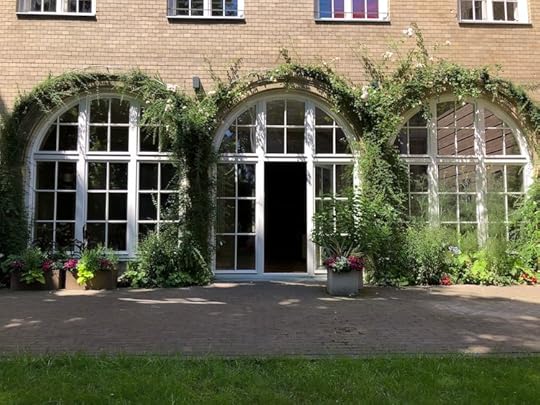
And in which, by another odd twist of fate, this bird was frantically making her nest.
By mid-day Tuesday, we were floating around our empty flat like ghosts, waiting to hand over the keys to Tamaz and Hannah G and their little boy Nico.
We flew back to Paris the evening of le 18 juin, a date that looms large on the French side of the Rhine.
The 17 June 1940 General Pétain gave a speech capitulating to the Third Reich. The next day Charles de Gaulle, who had just arrived in London, countered with his own oration over the BBC radio waves. In what came to be known as L'appel du 18 juin he called the French, out of "l'honneur, le bon sens et l'intérêt supérieur de la patrie", to arms against what he rightly predicted would be another world war. To this day the date is evoked every year by politicians, journalists and the general public as a grand and decisive moment in the history of France.
Général Charles de Gaulle, place Clemenceau, Paris
That our appel du 18 juin, also a Tuesday, came from Germany rather than London is a sign of the relatively peaceful times in which I have been fortunate to live and a reminder that history is an unpredictable, protean animal. The two dates taken together echo how Germany and France have rubbed and bumped shoulders geographically and historically for centuries.
After a quick stop in Paris, the German movers drove the bulk of our Berlin belongings to the Perche. They camped in our garden Wednesday night and it seemed the perfect transitional act between chapters...
Parting shot, yesterday
...with the next one officially starting today, the first day of summer. Not to be outdone by history, nature here in the Perche has marked our arrival with its own signs. At 8.50 this morning, mid-writing of this blog, I felt a trembling all around me. A 5.1 earthquake, my first ever, just 150km (93 miles) from here. An hour later, taking a break and wondering how to end this passage between two lives, I looked out the window to this in our garden: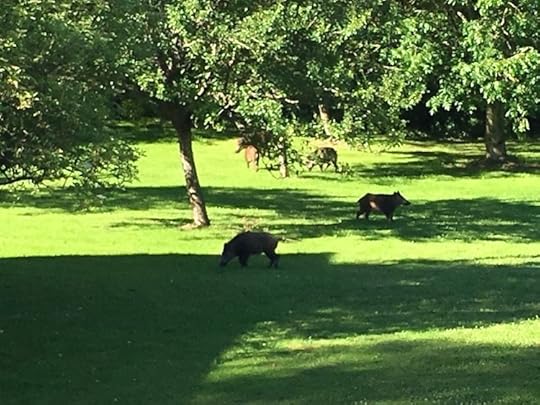
Wild boar family welcome
So stay tuned for new adventures in the renamed blog: A Paris-Perche Diary!
June 8, 2019
The Best of It

Friday, 7 June
During our three-week Berlin stint in May, I drew up two lists, one with the preparations for the move mid-June and the other a personal catalogue of what I wanted to get done during this final stretch as a resident of Berlin. Here in Paris this last week I've been thinking about it and the window it gives onto my Berlin life.
If you can decipher the handwriting you will see it is a mixture of domestic minutiae and the larger urban picture.
There are many small things that I have come to appreciate in Berlin. Some I can't take with me, such as the larger yoghurt pots that create less waste than their smaller French cousins. They have a perforated strip on the paper casing that allows for easy removal and separate recycling from the plastic body. Or the flat bread I buy at the Turkish shop or the dark, dense extra-seedy kind I've recently discovered at the Edeka supermarket or the 10 different kinds of fish that are smoked right there on the banks of the Spree.
Other things are worth stocking up on. There are the fasteners (small and large, shown above) for locking in freshness. Here in France we have tended to use close pins or black metal clips meant for office use but they are far inferior to the German clamps in keeping out the air. There is the Rapunzel crunchy peanut butter, the best in the world in my humble but well-researched opinion. And dog supplies. You’d think the French would at least have the upper hand on the treats, if not the poop bags, but it’s impossible to get healthy snacks here in the quantities required for the training of la Princesse.
Finally there's the rose soap, which is actually English, that I discovered while we were living in Kreuzberg. Biking over to buy a bar or two would also allow me to revisit the fond memories I have from that short but sweet period in our Berlin life.
walking Elsa along the canal, Kreuzberg
I got there just in time. Broken English had lost its lease before renovation work (an easy way to then raise the rent) and was closing its doors at the end of the month. Amidst mostly empty shelves, I had a long chat with the owner, a British woman who has lived in Berlin for 40 years. She lovingly described her life in the divided years of the city. How cheap it was to live, especially considering you also got a subsidy just for residing in West Berlin. But after the Wall fell was an exciting time, too. “I got the best of it,” she said with a nostalgic smile. I bought five bars of soap.
I was also determined to get to the Bülow Straße, where my piano was made in 1907, the same year our house in Alt-Treptow was built. Given its location, I imagined it had not survived the bombs or the urban planners but I was wrong; number 48-49 has endured.
It is easy to imagine this long storefront, now a job centre for artisans, was once a workshop large enough for Carl H. Hintze to build and display his Klaviere and Flügel. My piano will be the subject of a forthcoming blog; for now I'll just say that standing inside (when a woman entered number 49, I stuck my foot in the door and entered behind her) was a heady whiff of the Berlin that is still stuck in time.
Last on the list was a final tour of the Halbinsel Straulau. Though I have been visiting and documenting this peninsula since we moved to Alt-Treptow in 2015, the growing number of cranes had been beckoning me from across the Spree on my morning dog walk for quite a while.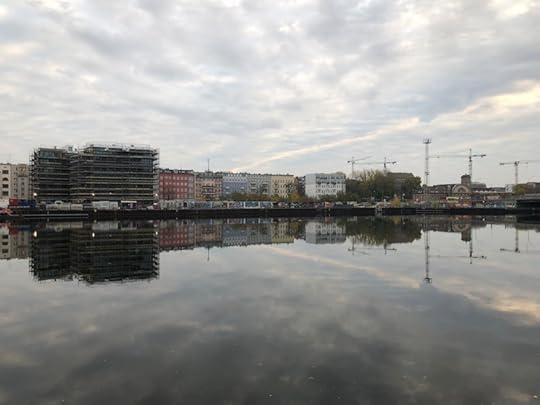
Originally I was attracted to the dilapidated buildings and wasteland surroundings.
2015
Now, given the cranes and the general building frenzy in Berlin, I should not have been surprised by what I found. But I was.
today
In fact I hardly recognized the place, which every day looks more like Florida-an-der-Spree than what I think of as Berlin.
not everyone is happy about the construction
It feels completely soulless, in a very soulful city, and I sympathize with the graffiti-er who wrote GENTRIFUCK on this unfinished but already occupied building, even if I myself am a gentrifier, albeit of an old building.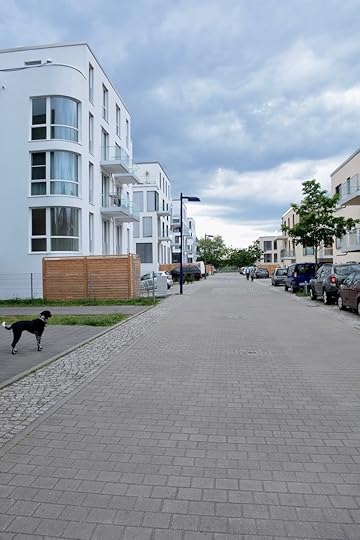
I kept thinking that Karl Marx, who once lived here, must be having a good I-told-you-so moment from the grave.
no wonder he's looking grumpy
There is much that I will miss in Berlin. The vicissitudes of its history but also the small things that punctuate my days and make even a voluntary move a wrenching experience. The city's apparent vision of the future, however, is not on the list. Still, I did catch the tail end of the best of it and for that I am grateful.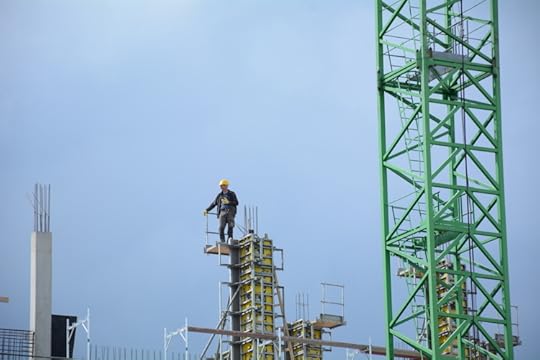
Is this really the top of the world?
May 18, 2019
Woodland Friends
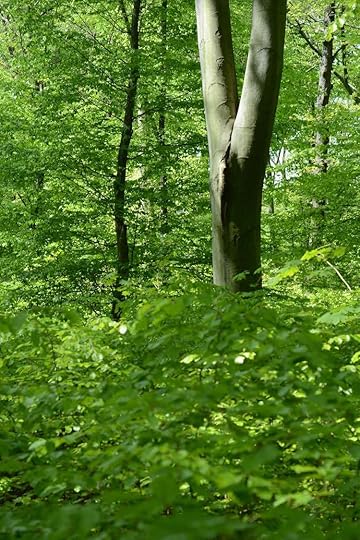
Friday, 17 May
When my friend Cathy S was a little girl, she came home from school one day and said to her mother: “I’ve made a new friend.”
“That’s nice,” her mother replied. “Who is it?”
“A tree.”
Not surprisingly Cathy became a poet but she might have been German.
friends at Tegelsee
Trees are taken seriously here in Berlin and are a huge presence: the streets are home to 431,000 of them. When the parks and woods are thrown into the calculation—and there are 23 larger than 50 hectares (124 acres) and 80 between 10 and 50h—the number rises to around a million. Since all but the spindliest of saplings are numbered…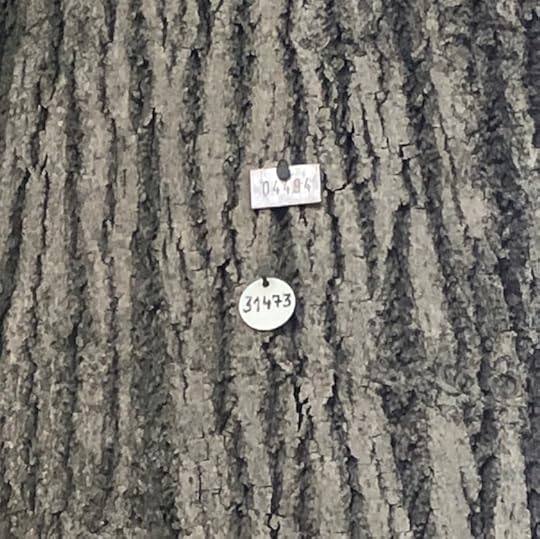
old and new tags (pre/post-unification?)
…you know the statistics are reliable. The density is especially astonishing since by the end of the Second World War, the tree population had been as decimated by bombs as the rest of the city, which was 80% destroyed. Here, for example, is how Berlin's largest park, the Tiergarten, looked after the War: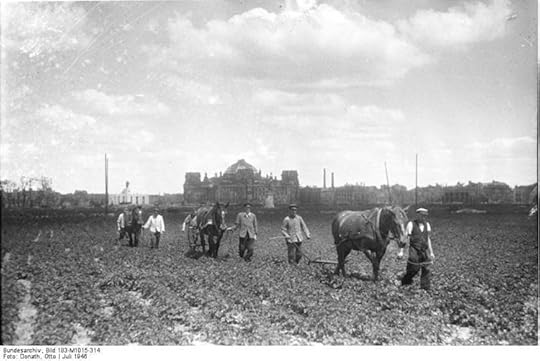

A denizen of today's Tiergarten
Berlin may be a particularly prolific example but it's a national phenomenon. The whole country has a thing about trees and forests, dating back hundreds of years. Some claim that it developed when Napoleon occupied the territory in the early 19th century. That the German embrace of natural nature was a reaction to the control-freak French approach and that this anti-French stance helped define the growing sense of German nationhood. Grimms’ fairy tales, first published in 1812, just as Napoleon was losing his hold on Europe, would certainly reinforce that idea. Think, for example, of Little Red Riding Hood or Hansel and Gretel or The Musicians of Bremen or Snow White, all of which take place or have scenes in the forest’s depths. About this time too the über-Romantic painter Caspar David Friedrich was relying heavily on trees to create mood.
November Garden of Melancholy
The Nazis picked up on the Romantic fixation and exploited it—but you can't blame the trees for that.
In any case it’s not surprising that in 2015 it was a German who wrote the book The Secret Life of Trees. In it Peter Wohlleben describes the sophisticated support system of trees in forests. He demonstrates how very similar their relationships are to human family and social structures. And surely only a German could have turned such unsexy subject matter into an international bestseller.
First with Elsa, now with Tasha, I have done a lot of walking in Berlin's parks and woods. The Bezirk where I live, thanks in part to the Treptower Park and the contiguous Plänterwald, is the most tree-rich district in this green city with almost 7000 hectares (17,300 acres) of wooded area. I have had ample occasion to witness German fusion with the forest. I've often seen people, for example, stop and stare at a particular tree, approach it, touch the trunk. Others use trees for family fun and bonding.
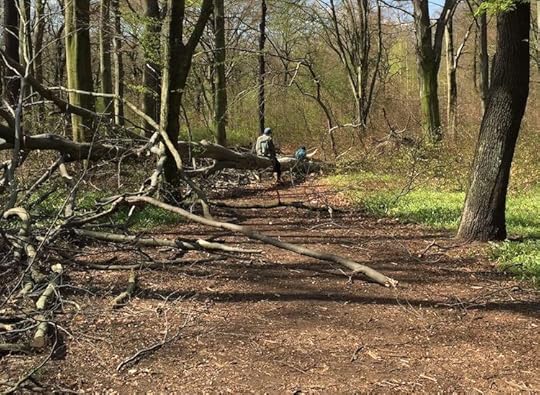
father and son
Then there’s this curious habit of building tepee-like structures with loose sticks and logs. It may have something to do with the bizarre German fascination with the American West and Native Americans but I'm not sure. I've never seen anyone actually sitting inside these structures.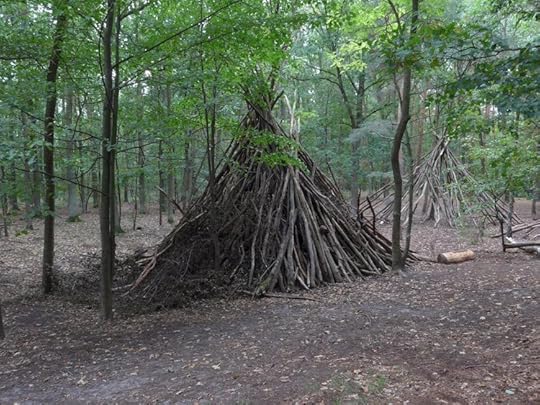
Even in death trees are respected. Many rotting specimens are left in place, sometimes with signs informing the public that though dead they continue to house insects, which feed birds, all contributing to a healthy ecosystem. Others are immortalized in sculpture.
So I understand exactly what the Grimm brothers, Caspar David Friedrich and Peter Wohlleben are talking about. Trees can be spooky...
...or they can cause your spirit to soar.
Like with Cathy, many have become friends who give off not just oxygen but Strahlungen, vibes, that do indeed make them seem quite human.
Their size and majesty are a humbling, daily reminder to me of how lucky we are to share the planet with these beings, especially in spring when they transform the Berlin’s drab, sad landscape into a lush assembly of green.
we are very small
How sad that they too are under threat in our frenetic, solipsistic world. The city is threatening to turn a track in the middle of the Plänterwald into a road so that people can reach the revitalized amusement park by car. Thanks to climate change, which induced a freak storm in 2017 and a crippling drought last summer, 7000 Berlin trees have died in the last two years. In 2019 there's been almost no rain in months; it breaks my heart.
Perhaps I am particularly sensitive to and appreciative of tree life here this spring because it is our last. As many of you know or have surmised from recent blogs (defining chez moi and buying a new house), we are leaving Berlin and moving back full-time to France. I'll write more about that when we actually move mid-June but suffice it to say now that I'm really going to miss my woodland friends.



